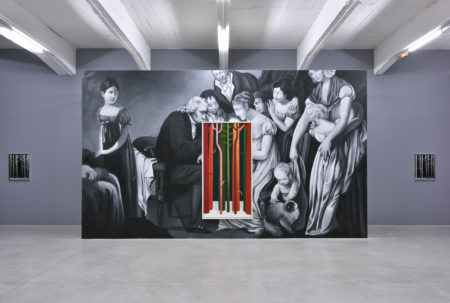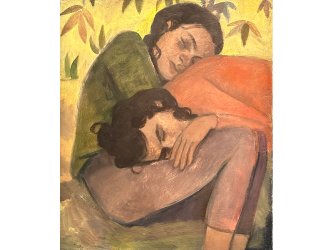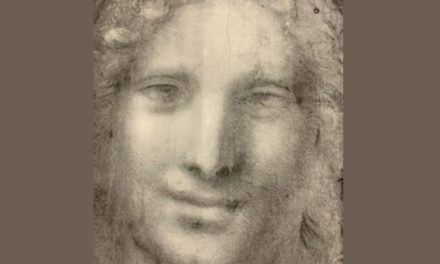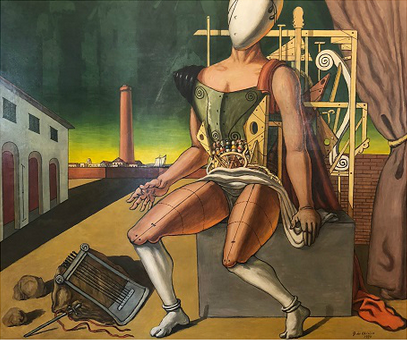
Louis Léopold Boilly
It’s just an illusion
Seeking to create illusions is one of the great virtues of art. It is a process that is often practiced in current creation. Without mentioning the entire hyperrealist school, we might think for example of Gerhard Richter, one of the most famous modern-day painters and conceptual artist who decided to make paintings depicting photos and also to take photos depicting paintings.
What do you see?

Louis Léopold Boilly
The question put to the viewer is therefore: what do you think you see? This conceptual approach has numerous precedents.
Trompe l’oeil

Louis Léopold Boilly
The “trompe l’oeil” technique flourished in the 19th century with a Parisian artist who is nowadays almost forgotten, to whom the Louvre has dedicated a room in their permanent collections: Louis-Léopold Boilly (1761-1845). He is the subject of an exhibition of 130 artworks until 26 June at the Musée Cognacq-Jay in the Marais.
Intriguing

Louis Léopold Boilly
One of the masterpieces in this intriguing layout is “Les petits soldats”, an oil on canvas from 1809. We see three young boys playing at war, depicted in sepia tones. This “grisaille”, or black and white painting, is meant to imitate an etching since the artist also reproduced a white margin and inscribed the title of the work at the bottom of the canvas.
Real etching?
Boilly would make a real etching from this image only a year later. According to the authors of the artist’s recent catalogue raisonné (1), Pascal Zuber and Etienne Bréton, it was in 1800 that Boilly himself claimed the term “trompe l’oeil” and made it famous. Up until then it was used exclusively in the world of decoration.
Grimacing heads
In the same spirit, around 1820 he painted thirty-three grimacing heads. They are painted using ink and oil but they imitate pencil. Around 1795 he produced a bunch of grapes against a white background, executed with great virtuosity. To accentuate the realism he reproduced the shadow of the fruit as well as the nail and string holding it together, which literally seems to jump out of the canvas.

Louis Léopold Boilly
Minutiae
One of the secrets to Boilly’s magic lies in his mastery of minutiae. He used state-of-the-art optical instruments which can be found at the Cognacq-Jay. It’s this confusing technique that we can see used in his depictions of crowds, for which he had a particular fondness.
Scene de carnaval

Louis Léopold Boilly
It’s worth studying his “Scène de carnaval”, where in amongst the one hundred-odd figures he includes a dog wearing a mask, while a woman reveals her buttocks while climbing up to a carriage.

Louis Léopold Boilly (detail)
Libertine streak
But the painter’s mischievous touches shouldn’t eclipse his trailblazing talent in areas other than trompe l’oeil. He also developed a libertine streak in which women with other women featured prominently. Long before Gustave Courbet with his famous “Sommeil” – a painting depicting two nude women passionately entwined in a bed, on view at the Petit Palais museum in Paris – Boilly painted “Deux jeunes amies qui s’embrassent” around 1789.

Louis Léopold Boilly
Risqué scene
In 1794 this kind of risqué scene caused an outcry among certain patriots upset by “this obscenity that revolts against the morals of the republic”. Boilly, however, escaped the guillotine.
Nicolas Party

Nicolas Party: Boilly
If it were necessary to confirm Boilly’s trailblazing talent, we’d also point out that last summer the young and high-profile Swiss painter Nicolas Party (born in 1980) staged an exhibition at Dijon’s art centre, Le Consortium, entirely in tribute to Boilly. “I fell in love with him,” declared the painter who is also currently exhibited at Montreal’s Musée des Beaux Arts.
Forgotten treasures
This is the time to rediscover forgotten treasures of art history.
Boilly. Chroniques parisiennes. Musée Cognacq-Jay. Until 26 June. www.museecognacqjay.paris.fr/
(1) Arthéna, 2019.
Support independent news on art.
Your contribution : Make a monthly commitment to support JB Reports or a one off contribution as and when you feel like it. Choose the option that suits you best.
Need to cancel a recurring donation? Please go here.
The donation is considered to be a subscription for a fee set by the donor and for a duration also set by the donor.




